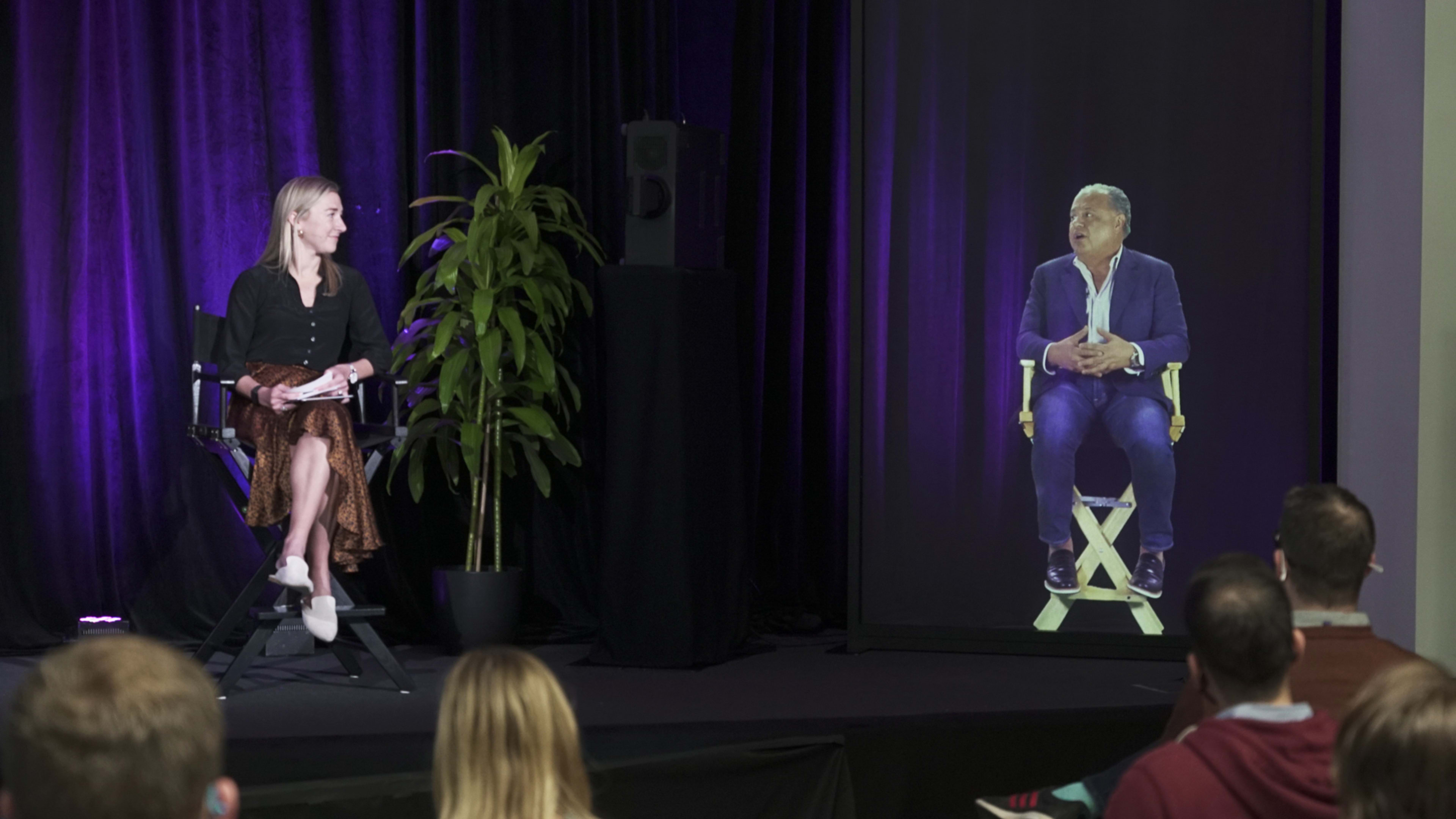WeWork once declared that it was a “technology company,” not just the landlord of coworking spaces. Now, two years after the company’s hype implosion, it says it’s going to start enabling something decidedly techy: face-to-face meetings with holograms.
Before you start picturing Princess Leia flickering atop the table in a WeWork meeting room, know that the company plans to enable its tenant companies to host events such as presentations and panel discussions where the people watching are present, and the speakers on the stage aren’t. The speakers are talking in front of a green screen somewhere else in the world, and are recreated as life-size holograms.
WeWork has entered into an agreement with a Canadian company called ARHT Media, which developed the technology that will be installed in WeWorks around the world. Speakers would go to a capture studio at a WeWork near where they live to participate in a panel discussion.
The WeWork hosting the panel would have a large-ish piece of audiovisual equipment standing on the stage to display the holograms. That gadgetry, called a HoloPod, is about five feet wide, ten feet high, and five feet deep. It looks like a big TV where the screen is partly see-through. It has an HD projector, audio speakers to convey the speakers’ voices, and an audience-facing camera and microphone (so the speakers can see and hear and field questions).
WeWork’s chief product and experience officer Hamid Hashemi tells me WeWork looked at numerous systems for remote events and found that ARHT had the best technology. “It’s about as close to having a natural in-person experience that you can find with a person at a remote location,” Hashemi says. AHRT says the technology is ideal for town hall meetings, training and education seminars, and recruitment or sales meetings.
WeWork will have the ARHT equipment (both the capture studio and the HoloPod) installed in sixteen of its locations by the third quarter of this year. ARHT will install the technology in as many as 100 more WeWorks in the future, the companies say.
Hashemi would not say whether WeWork is buying or renting the holographic gear and software from ARHT. “We’ve entered into a financial arrangement that has benefits for both parties,” he says. WeWork customers who use the service would pay for the privilege. (As sold by ARHT, systems can carry six-figure price tags and involve service charges of thousands of dollars per event.)
Like being there
The secret sauce of the AHRT technology is the low latency, Hashemi tells me. For multiple people to sit on a holographic panel together, talking to each other, there just can’t be much delay between when someone says something and when that person’s hologram says it. Too much latency could result in overtalking and confusion–not a great experience for the speakers or the audience. ARHT, Hashemi says, developed a special kind of compression so that the telecommunication network transmitting the hologram data can handle the load.
AHRT is just one of many companies trying to address corporate workflows that will likely be forever changed by the COVID-19 pandemic. In-person meetings are no longer the de facto answer. They’re being questioned for a number of reasons–cost, contribution to carbon emissions, demand on time. Virtual meetings have not only become more accepted during the pandemic, but the necessary migration to digital channels has incentivized technology companies to make virtual meetings more like real-time in-person meetings. Another approach to the problem is holding virtual meetings within augmented reality or virtual reality glasses or headsets. The AR company Spatial is working on this, as is Facebook.
We’re probably some years away from a compact device—smaller than R2-D2–that enables live holographic communication in your meeting room or living room. In the meantime we’ll have to go to where the technology lives. WeWork is trying to make it a shorter distance away.
Recognize your brand’s excellence by applying to this year’s Brands That Matter Awards before the early-rate deadline, May 3.
